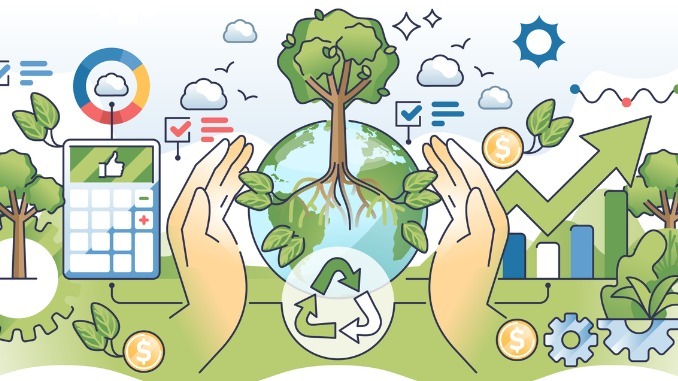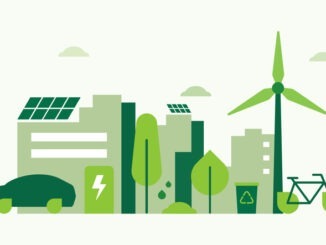
In this two-part article, the UKSSN share key tips and resources for the best use of data and metrics in shaping and evaluating school sustainability plans and strategies
In their Climate Change and Sustainability Strategy, the DfE identified the important role schools must play in all aspects of sustainability. The area in which we have the most work to do is reducing our environmental footprint to achieve net zero.
The complex, multi-dimensionality of sustainability problems are wicked and include the interaction between environmental, social, and economic aspects. These concepts are relatively new to the education sector, resulting in confusion about where to start. Possibly, preventing schools from taking those first steps.
Increased environmental performance relating to decarbonisation, including energy efficiency, power generation and alternative sources of heating are desirable, but not yet mandatory for UK schools.
Carbon reporting, via the Streamlined Energy Carbon Report (SECR) is statutory for trusts which exceed any two of the following thresholds:
- over 250 employees
- £36m annual turnover
- £18m balance sheet.
There is currently no accountability for putting in place measures to reduce an organisation’s carbon footprint, making it difficult to prioritise decisions to invest in sustainability.
When identifying measures to reduce environmental impact and decarbonise school estates and operations, leaders will be balancing competing demands and ever tighter budgets. It is critical to identify the cost, projected savings and likely return on investment (ROI). Decision making will need to be based on reliable data, that can be easily understood and scrutinised.
Understanding Data
The use of data must form the cornerstone of environmental and sustainability efforts. Data is fundamental to identifying and understanding measures required, modelling potential savings, monitoring impact and establish the baseline for long term improvement targets.
Data may already be available or simple to obtain. Finance / Operations teams will hold energy consumption, water usage, waste and business travel. Schools can generally obtain staff and pupil commuting habits via school travel plan research tools i.e. Modeshift STARS.
Digital smart meters designed to provide ‘live’ utility usage are becoming more commonplace, improving the quality and reliability of data, and helping identify opportunities to reduce waste. Accurate and comprehensive data allows schools to identify environmental impact, pinpoint inefficiencies and develop targeted interventions for inclusion in their Climate Action Plans.
Some datasets may not be readily available, for example, carbon footprint data of purchased goods and services, which smaller suppliers are unlikely to hold at present. The education sector can be a positive driver of change, raising expectations on suppliers to provide environmental and sustainability data whilst continuing to champion SMEs, who are vital to the social and economic infrastructure of our communities. Where possible schools can include demands for environmental data in supplier contracts.
The quality of data must be established, and plans made to improve it over time. For example, waste transfer notes may detail the number of skips collected over a period, but not the weight of the waste. Whilst basic data provides valuable information about bins and collections, it cannot be used to establish the destination of the waste, percentage diverted from landfill and carbon footprint of the waste produced. To establish accurate baselines and set targets, working with suppliers to improve data is essential. Including a requirement for weight of waste removed could be included as a contractual obligation.
External data may also be used to inform procurement decisions. For example, referring to life cycle assessments of IT devices, prior to purchase, could be used to reduce operational energy consumption.
Using Metrics Effectively
Metrics provide the quantitative foundation to track progress and set benchmarks for sustainability initiatives. Metrics might include Co2te/pupil as an agreed SECR reporting metric; % diversion of waste from landfill; water consumption in M3/pupil; gas and electricity consumption in kwh/pupil.
National benchmarks for energy consumption are available via the CIBSE and DEC reports can be used to compare annual consumption against national benchmarks. For water consumption, the MOSL schools dashboard can be used to compare consumption/pupil against regional, supplier and national benchmarks.
Completing an annual carbon footprint is essential as it provides a key metric for monitoring performance. Understanding emissions will enable schools to target underperforming areas of operations and prioritise spending. It may also identify overlooked areas, for example the impact of staff and pupil commuting and impact of food waste.
The use of metrics supports strategic planning and reporting processes. Robust metrics enhance transparency and provide effective accountability measures.
Don’t forget to look out for part two of this article, which will explore the benefits of modelling and monitoring in sustainability improvement plans.


Be the first to comment